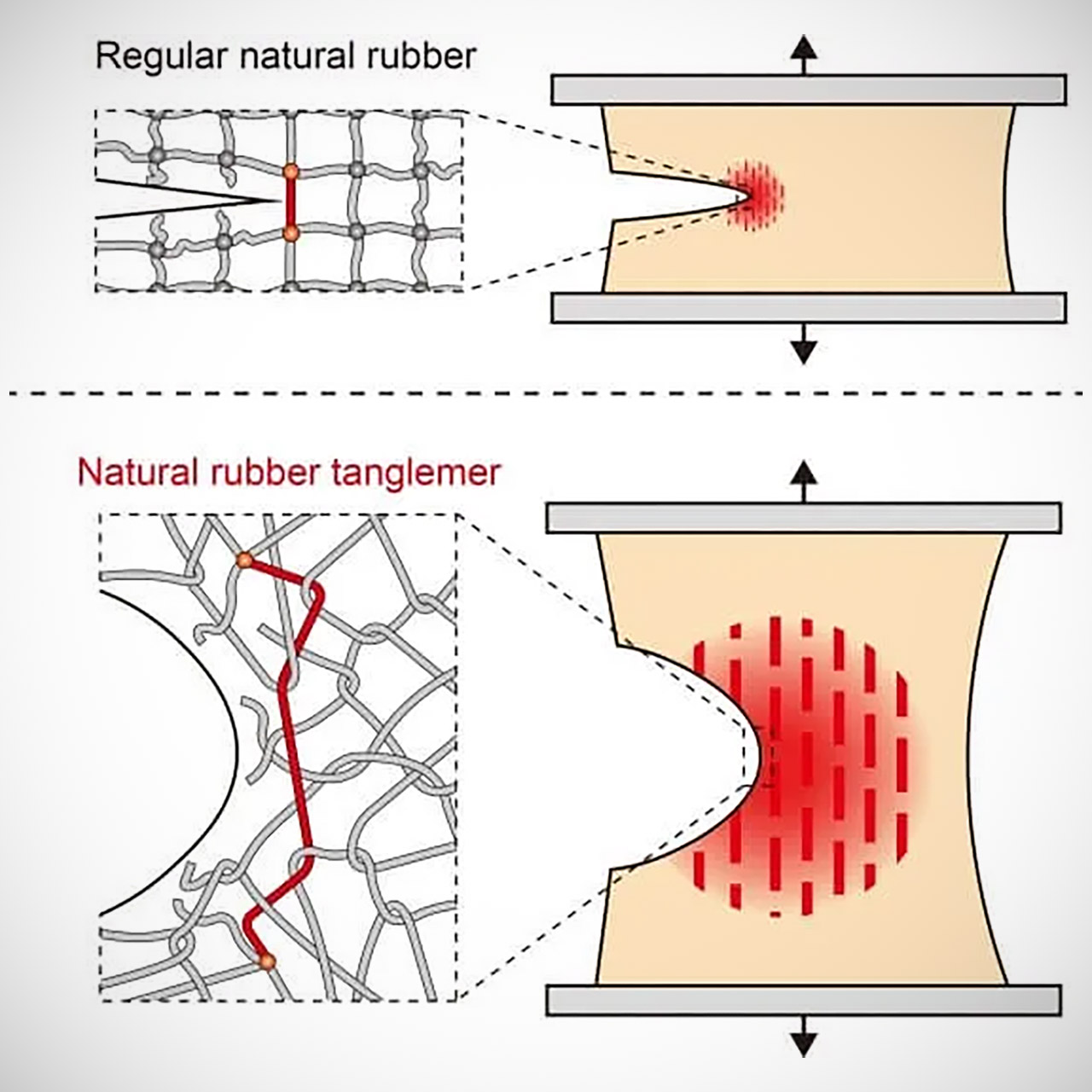
Rubber is everywhere—tires, seals, gloves, even the soles of our shoes. It’s flexible, strong and essential but it has a problem: it cracks easily. Once a crack appears it grows and ruins the material. A team at Harvard’s John A. Paulson School of Engineering and Applied Sciences has created a new natural rubber that’s 10 times tougher and better at stopping cracks than anything we’ve seen.
Led by Zhigang Suo, a professor of mechanics and materials, the Harvard team looked into how rubber handles stress. Regular rubber, made stronger through vulcanization, has short, tightly linked polymer chains. These make it strong but prone to crack when stretched and stretched. Suo’s group took a different approach, keeping the long, tangled polymer strands found in raw natural rubber, like a messy pile of spaghetti that’s hard to pull apart. “We thought the properties would be enhanced maybe two or three times but actually they were enhanced by one order of magnitude,” said Zheqi Chen, a former postdoctoral researcher and co-first author of the study published in Nature Sustainability.
- IMMERSIVE 360 VIDEO - The 8K era is here. Insta360 X4 delivers 360° video in stunning 8K or 5.7K60fps! Use Active HDR to keep shots color accurate...
- SIMPLE, EASY REFRAMING - With Insta360 X4, get out there and shoot, not having to worry about lining up a shot. Shoot first, then reframe easily...
- INVISIBLE SELFIE STICK EFFECT - The signature third-person Insta360 shot, a specialty of 360 cameras. Immerse your viewers in obstruction-free 360°...

This softer approach, inspired by how latex is made, lets the rubber spread stress across its long, bendy strands. When a small crack appears the material’s structure—called “tanglemers” by the team—spreads out the stress, slowing the crack’s growth. Tests showed this new rubber is four times better at resisting slow crack growth during repeated stretching and 10 times tougher overall. “In the new rubber tanglemer, a long polymer strand at a crack tip de-concentrates stress over a long distance making the material more resistant to crack growth than regular natural rubber,” the Harvard team explained.
So why does this matter? Tires are a clear example. Cars rely on rubber for parts like tires, gaskets and seals that get beaten daily. Cracks in these lead to flats, leaks or breakdowns, time and money. This new rubber could make tires last longer, especially for tough jobs like off-road driving or motorcycles where toughness is key.
The possibilities go beyond tires. Medical gloves which need to be thin but strong could stay intact through repeated stretching. Flexible electronics like wearable sensors or foldable screens need materials that can handle constant bending. Even robotics which relies on soft, durable materials could get a boost.For now it’s best for thinner applications but the possibilities are vast. Think of seals in car suspensions that last longer and save drivers from expensive repairs. Or gloves that hold up during critical medical procedures. With the automotive industry facing supply chain issues like rare-earth magnet shortages this tougher, longer lasting rubber could change everything.
Clear Text
[Source]










